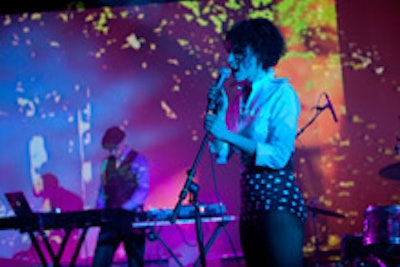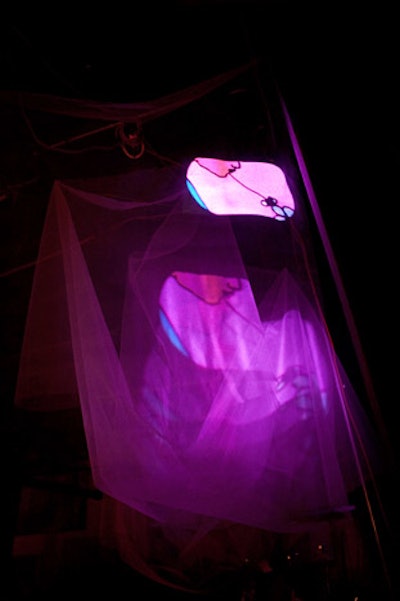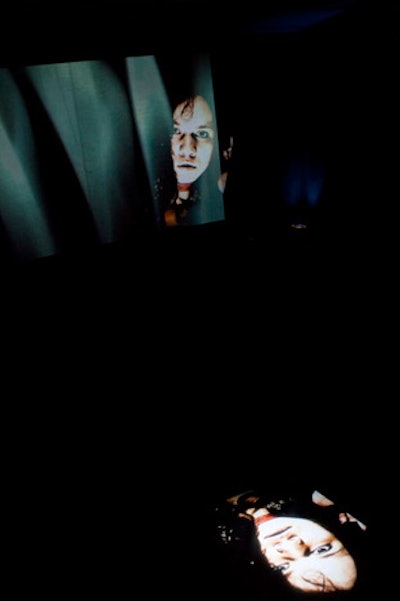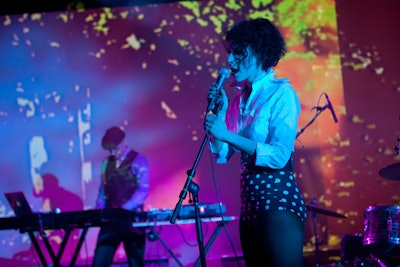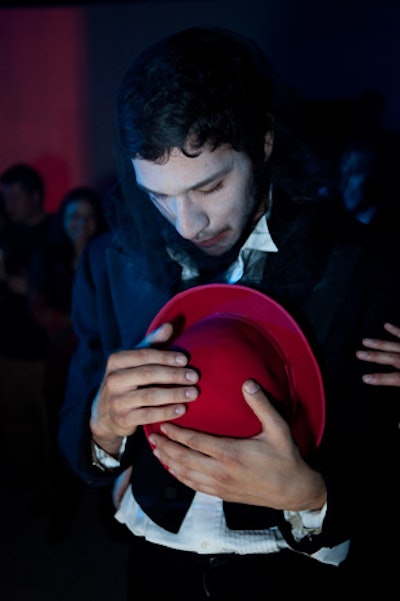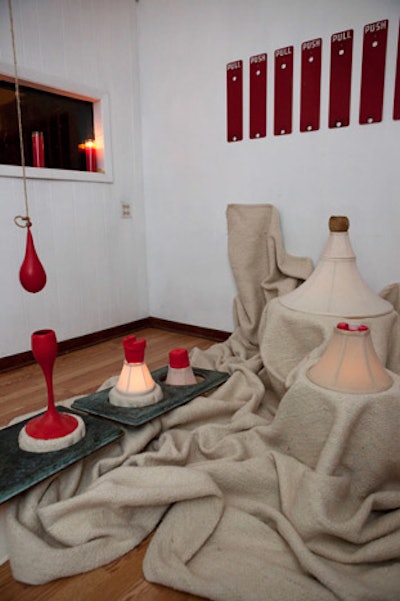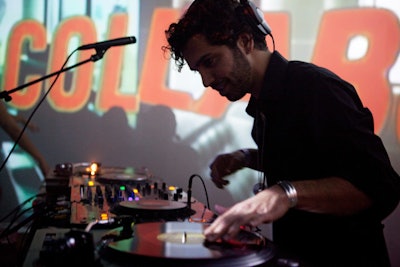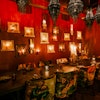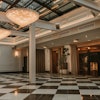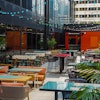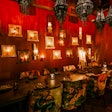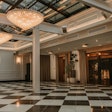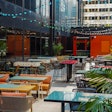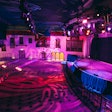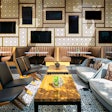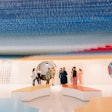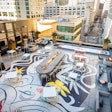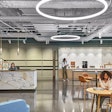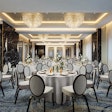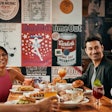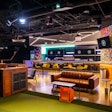Usually, hosts strive to put guests at ease. At Saturday night's Carnaval, a kickoff for Collaboraction's 2009 Sketchbook festival of plays, the theater group aimed to disconcert. As guests filed into West Grand Studios, a sound stage attached to Collaboraction's new administrative offices, performers clad all in black ambled up to individual attendees, staring at them through lace veils for uncomfortably long periods of time, and sometimes feigned fits of inconsolable weeping.
The happening took visual cues from Edvard Munch's brooding artwork—currently on display at the Art Institute of Chicago— and represented Collaboraction's take on Carnaval, which executive artistic director Anthony Moseley described as a "globally visceral celebration." Collaboraction's specialty, Moseley said, "is to take rituals [such as Carnaval] and deconstruct them," putting them back together with "our own alphabet, tools, passion, and neuroses."
To help give visual and sonic life to those passions and neuroses—and to add an element of Munch's moody perspective to the evening—Moseley worked with production designer Sam Porretta and development council chairs Matt Woodburn and Carmelita Tiu to stage an event that constantly changed vibes with the help of seven video artists, 24 performers, two live music acts, and five DJs. The artists came together throughout the evening to collaborate on ever-changing environments that, according to Moseley, would let guests "move from dark to light, and from fear to love."
To achieve those continually shifting moods, the event's focal point changed on an hourly basis. At the start, a cellist eked out slow, funereal songs in front of a screen that showcased stricken faces from Munch's paintings. All the while, the black-veiled performers took breaks from weeping to hiss at each other on the dance floor. Later, a live band replaced the cellist and performed a slow, loungey set while the background screen broadcast images of buildings, bridges, and flowers. The band eventually gave way to more uptempo DJ sets, which drew a troupe of break-dancers—this time, wearing all-white costumes—to the dance floor. While the group performed, the video backdrop showed colorful graphic images of floating figures kissing, a signal that the evening's "Love" portion had arrived.
Moseley said that using the Art Institute's current exhibition as a "springboard" for Carnaval was an economically sound move. Collaboraction is the resident theater company for the museum's After Dark program, a series of events that lets guests take a late-night spin through special exhibitions. On Friday night, the theater troupe provided atmospheric entertainment at the Art Institute while After Dark attendees checked out Munch's paintings. "It was sort of our dress rehearsal for tonight," Moseley said on Saturday. Along with costs for rehearsal time, Carnaval shared costume, lighting, and sound costs with Friday night's event. In this economy, Moseley said, "it's all about synergies."
